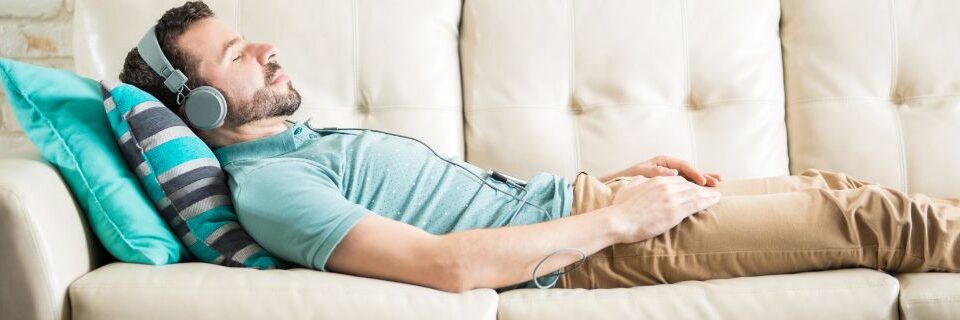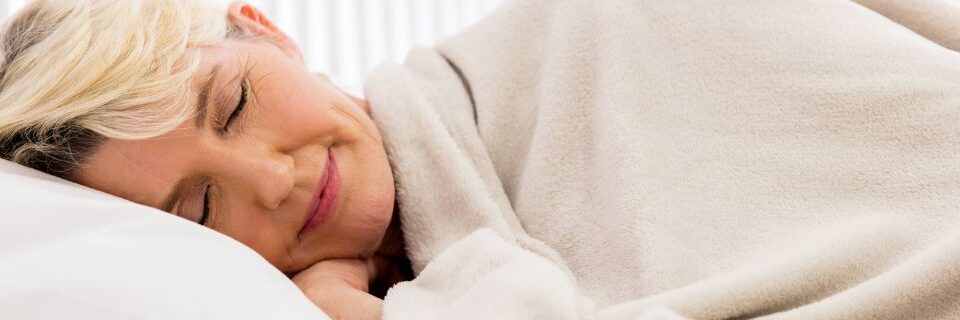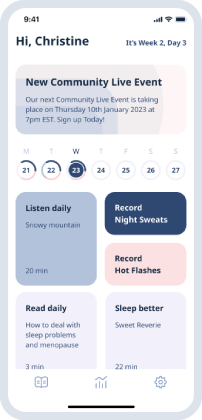
Five Great Ways to Get Better Sleep

What Is Sleep Insomnia? Symptoms, Risks and Treatments
Table of Contents
Apnea is a sleep disorder that causes your breathing to repeatedly stop and start while you sleep. Apnea has been linked with many complications, including high blood pressure and heart disease. It is a serious condition, but it is treatable. Here’s what we know about this disorder.
Apnea Symptoms
Do you often feel tired? Do you have any of the conditions commonly associated with apnea? You may have apnea if you also have any the following symptoms:
- Loud, frequent snoring.
- Gasping for air while sleeping.
- Waking with a dry mouth or sore throat.
- Frequent morning headaches.
- Daytime sleepiness.
- Waking during the night.
Apnea Types
Many doctors and researchers divide apnea into three types.
- Central: This happens when your brain does not send the right signals to the muscles that control breathing.
- Obstructive: This is caused by relaxed throat muscles that don’t regulate your breathing properly.
- Complex: This type shows signs of both central and obstructive apneas.
It’s important to note, however, that the differences between central and obstructive apneas are not clear-cut. Some people experience the symptoms of both, and some people switch back and forth between the two.
According to an article published in the Journal of Clinical Investigation:
“The distinction between obstructive and central apnea is not always clear. Frequently, apneas are mixed in type, beginning with a central component and followed by an obstructive period where respiratory movements reappear but are ineffectual in producing ventilation because of upper airway occlusion. Many patients have both kinds of apnea even within the same night.”
Sleep Apnea Causes
What causes an apnea episode?
It happens when your muscles don’t properly control your breathing while you sleep. The muscles in the back of your throat control your breathing. When you sleep, these muscles sometimes relax, which closes the airway in your throat. This cuts off your supply of air, and that lowers the oxygen level in your blood.
In response, your brain wakes you so you can breathe normally and take in oxygen. In many cases, this happens so quickly you don’t even remember it.
In some cases of central apnea, your brain doesn’t send the right signals to your breathing muscles. In this type, you stop breathing entirely for brief periods.
Although apnea is linked to other conditions, it does not have a single, defined cause. Most sleep apnea causes are underlying conditions, including obesity and heart disease.

Who’s At Risk of Developing Sleep Apnea?
Some people are more likely to develop apnea, and it’s often associated with other illnesses or conditions.
Illnesses that are often associated with apnea include:
- Parkinson’s disease
- Morbid obesity
- Hormonal imbalances
- Chronic lung disease
- Polycystic ovary syndrome
Besides these illnesses, the following factors may increase your chances of developing apnea:
- Smoking
- Drinking alcohol
- Having a family history of the illness
- Using sedatives to sleep
- Being over 40
- Being male
- Having a thick neck
Sleep Apnea Treatment
Although apnea is serious, it is highly treatable. There are several treatments available, and your doctor can prescribe the one that’s right for you.
Medical Treatments
The most common apnea treatments include:
Continuous positive airway pressure (CPAP) machine: This is the most common treatment for severe apnea, but many people find it uncomfortable to use.
Adaptive servo-ventilation (ASV): This machine monitors your daily breathing pattern and stores the information. When you sleep, it uses this stored information to stabilize your breathing pattern while you sleep.
Oral appliance: A lightweight oral appliance can help you keep your airways open while you sleep. A doctor or dentist can prescribe this device for you.
Supplemental oxygen: Some people with central apnea get relief from using supplemental oxygen.
Surgery: This is the last resort if other sleep apnea treatments have failed. Doctors may use surgery to correct the jaw position, create new air passageways, shrink tissues or remove tissues.
Home Care
If you have apnea, you can manage the symptoms and even reverse them by following some lifestyle changes.
Change your position: Studies have shown that just changing the position you sleep in can reduce or reverse your apnea. According to the journal Sleep, it is an effective treatment “for a significant number of apnea patients who have position-related obstruction.”
Lose weight: There is a strong link between weight and sleep apnea. According to the journal Chest, “Weight loss has been accompanied by improvement in characteristics related not only to obesity but to apnea as well, suggesting that weight loss might be a cornerstone of the treatment of both conditions.”
Avoid alcohol and sedatives: Reducing the use of alcohol and sedatives can help you prevent apnea and manage its symptoms. Instead of relying on sleeping pills or alcohol, try self-hypnosis or other safe, natural methods to fall asleep.
Apnea Is Treatable
If you have apnea, it’s important to know good treatments are available. If you suspect you might have apnea, talk to your doctor about the latest treatments that can help you get a good night’s sleep.
UpNow Health only uses high-quality sources, including peer-reviewed articles, to support the facts within our articles. All our articles are reviewed by experts to ensure that our content is accurate, helpful, and trustworthy.
1. Sleep apnea. National Heart, Lung, and Blood Institute. http://www.nhlbi.nih.gov/health/health-topics/topics/sleepapnea/.
2. T. Douglas Bradley and John S. Floras. Sleep Apnea and Heart Failure. Part I: Obstructive Sleep Apnea. Circulation. https://doi.org/10.1161/01.CIR.0000061757.12581.15
Eric Suni. Sleep Apnea. Sleep Foundation.
3. Rosalind D. Cartwright, Stephen Lloyd, Jamie Lilie, Howard Kravitz, Sleep Position Training as Treatment for Sleep Apnea Syndrome: A Preliminary Study, Sleep, Volume 8, Issue 2, September 1985, Pages 87–94, https://doi.org/10.1093/sleep/8.2.87
4. Abel Romero-Corral, Sean M. Caples, Francisco Lopez-Jimenez, Virend K. Somers, Interactions Between Obesity and Obstructive Sleep Apnea: Implications for Treatment, Chest, Volume 137, Issue 3, 2010, Pages 711-719, ISSN 0012-3692, https://doi.org/10.1378/chest.09-0360. (https://www.sciencedirect.com/science/article/pii/S0012369210601523)
5. Wetter, D. W., Young, T. B., Bidwell, T. R., Badr, M. S., & Palta, M.. Smoking as a risk factor for sleep-disordered breathing. Archives of internal medicine, 154(19), 2219–2224. https://pubmed.ncbi.nlm.nih.gov/7944843/
6. Cherniack, N. S. (1993). Future Directions in Sleep Research: A Respiratory Physician’s Perspective. Ear, Nose & Throat Journal, 72(3), 215–216. https://doi.org/10.1177/014556139307200308
7. Peppard, P. E., Young, T., Palta, M., Dempsey, J., & Skatrud, J. Longitudinal study of moderate weight change and sleep-disordered breathing. JAMA, 284(23), 3015–3021. https://doi.org/10.1001/jama.284.23.3015
8. Selim, B. J., Koo, B. B., Qin, L., Jeon, S., Won, C., Redeker, N. S., Lampert, R. J., Concato, J. P., Bravata, D. M., Ferguson, J., Strohl, K., Bennett, A., Zinchuk, A., & Yaggi, H. K. (2016). The Association between Nocturnal Cardiac Arrhythmias and Sleep-Disordered Breathing: The DREAM Study. Journal of clinical sleep medicine : JCSM : official publication of the American Academy of Sleep Medicine, 12(6), 829–837. https://doi.org/10.5664/jcsm.5880
9. Strohl, K. P.. MSD Manual Professional Version: Obstructive Sleep Apnea. https://www.msdmanuals.com/professional/pulmonary-disorders/sleep-apnea/obstructive-sleep-apnea
10. Rundo J. V.. Obstructive sleep apnea basics. Cleveland Clinic journal of medicine, 86(9 Suppl 1), 2–9. https://doi.org/10.3949/ccjm.86.s1.02
11. Donovan, L. M., & Kapur, V. K. (2016). Prevalence and Characteristics of Central Compared to Obstructive Sleep Apnea: Analyses from the Sleep Heart Health Study Cohort. Sleep, 39(7), 1353–1359. https://doi.org/10.5665/sleep.5962
12. Maeda, T., Fukunaga, K., Nagata, H., Haraguchi, M., Kikuchi, E., Miyajima, A., Yamasawa, W., Shirahama, R., Narita, M., Betsuyaku, T., Asano, K., & Oya, M. Obstructive sleep apnea syndrome should be considered as a cause of nocturia in younger patients without other voiding symptoms. Canadian Urological Association journal = Journal de l’Association des urologues du Canada, 10(7-8), E241–E245. https://doi.org/10.5489/cuaj.3508
13. Vouzouneraki, K., Franklin, K.A., Forsgren, M. et al. Temporal relationship of sleep apnea and acromegaly: a nationwide study. Endocrine 62, 456–463 (2018). https://doi.org/10.1007/s12020-018-1694-1
14. National Institute of Neurological Disorders and Stroke (NINDS). Sleep Apnea Information Page. https://www.ninds.nih.gov/Disorders/All-Disorders/Sleep-Apnea-Information-Page
15. Garvey, J. F., Pengo, M. F., Drakatos, P., & Kent, B. D. Epidemiological aspects of obstructive sleep apnea. Journal of thoracic disease, 7(5), 920–929. https://doi.org/10.3978/j.issn.2072-1439.2015.04.52












